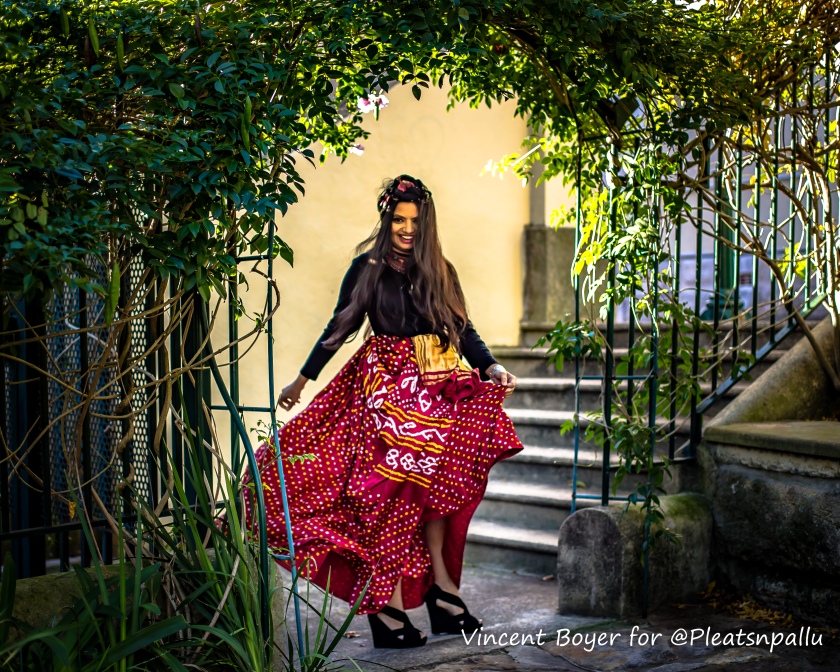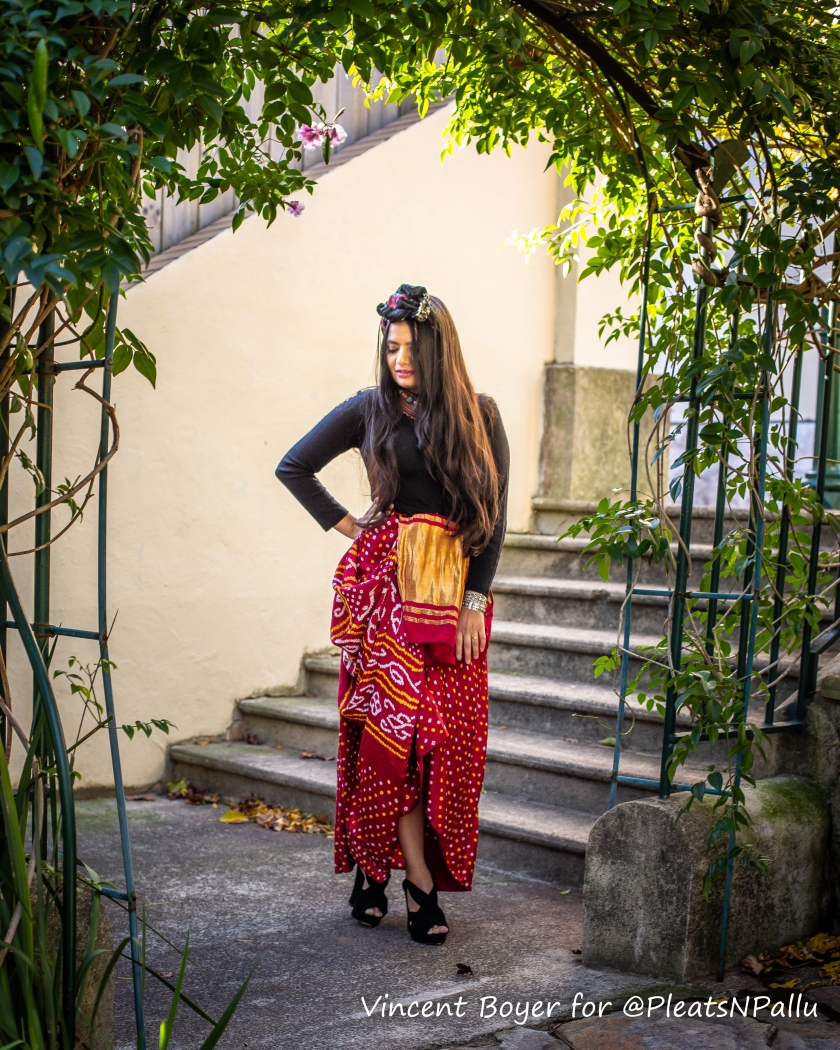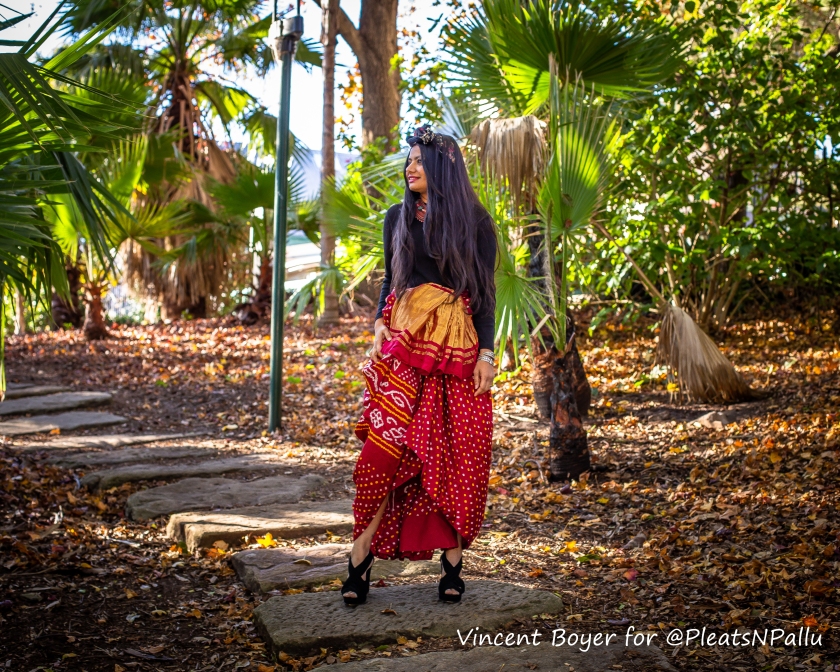The luxurious handwoven brocade beauties from Varanasi — Banarasi sarees with their detailed renderings of flora, fauna and geometric motifs are more than just fabrics, they are works of art that transcend generations…
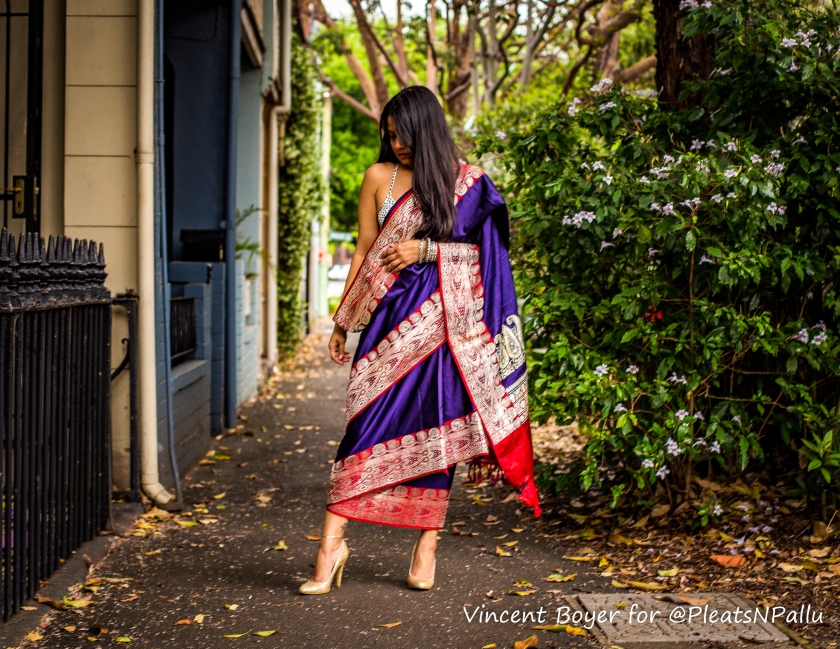
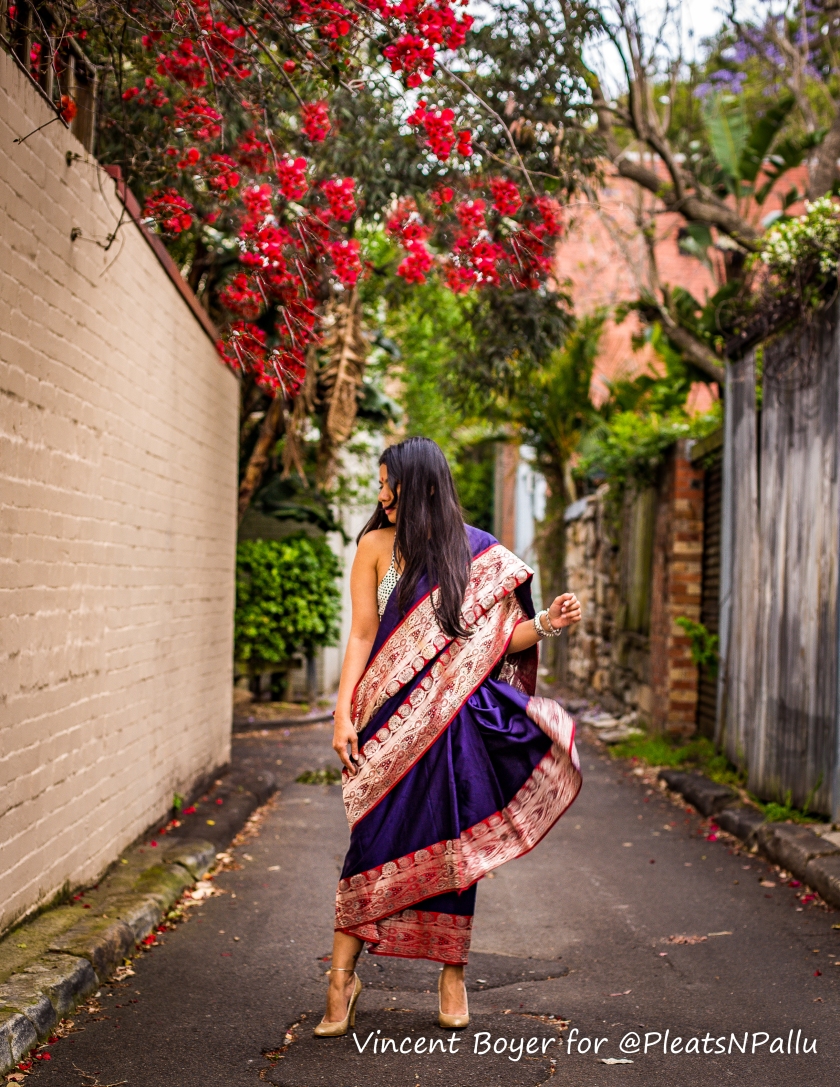
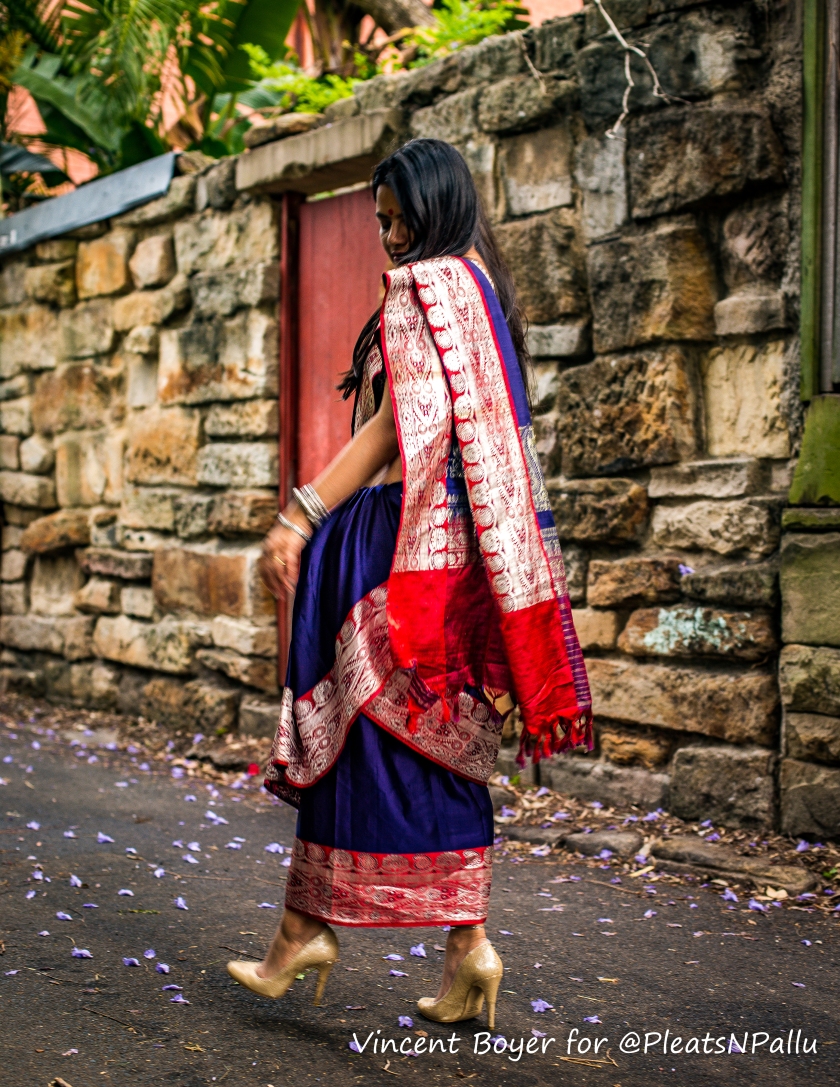
Photos: Vincent Boyer (Say hi on instagram @vincetravelbook)
The various types of Banarasi sarees define sublime decadence and exquisite craftsmansip.
In these photos I am wearing a vintage katan silk Banaras saree with a Meenakari border made using the kadiyal technique.
Personally I prefer handloom-ed kattan or kora silk banarasis with zari in various designs and I’ve tried to list what I know about the sarees I have.
Only brocade made in the six identified districts of UP namely Varanasi, Mirzapur, Chandauli, Bhadohi, Jaunpur and Azamgarh districts, can be legally sold as Banaras brocade.
Katan (Kattan) is a type of silk prepared by twisting a number of silk filaments to create a sturdier fabric and a firm base to then bring intricate designs to life.
Kinkhwab (kimkhab) is a heavy, gilt brocade known for extensive zari work which renders the underlying silk fabric almost invisible. The word literally translates to ‘tiny dreams’ which is interpreted to mean that Kinkhwab is ‘the fabric that dreams are made of’.
Tanchois are a very fine weave banarasi fabric that use an extra weft thread to create delicate patterns. I find them super easy to drape.
Meenakari patterns involves the painstaking addition of supplementary coloured resham threads during the hand-weaving process.
Valkalams are woven using pure satin threads in the kadhwa and phulkari techniques to create intricate patterns on the borders and pallu (headpiece) of a saree.
Kadiyals are a beguiling play in contrasts. This traditional technique involves changes in the warp and weft to weave the borders and aanchal in colours that are different from the body.
Jangla fabrics feature gridlike compositions comprising of what looks like an unending array of flowers, leaves and vines.
Bootidar silk sarees feature intricate brocade made of silk, silver and gold in a distinctive manner and may be called Ganga and Jamuna as well.
Various motifs in these kinds of sarees include bel and bootis including angoor, gojar, luttar, khulta, baluchar booti, mehrab, doller, ashraffi, latiffa, resham, jhummar, jhari, kalma, patti, lichhi, kairy, ginnie, vriksh, geenda etc with the use of real gold and silver zari and katan silk in the weft. This is also referred as the amru brocade saree.
Shikargah, primarily featuring motifs of human figures, birds, animals, flora and fauna, these designs pay homage to the royal hunts of yore.
Kadhwa (kadhua), is an elaborate and laborious technique that involves hand-weaving each motif separately to make a very sturdy embossed pattern, which stands out on the fabric.
Jamavar is an exquisite jacquard fabric from Kashmir and in Banaras, they combine the technique used to create jamavar shawls to make the uber intricately woven brocades with the same name.
I am sure there is a whole lot more to know and learn about these magnificent textiles, I would be very grateful if any of you could point me in the right direction. If you are looking for festive season silk saree inspiration, here is a list of twelve kinds of handloom silk sarees I love. If you are looking for some festive saree draping ideas you can find them here, here, here, here, here, here, here here and here.
